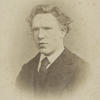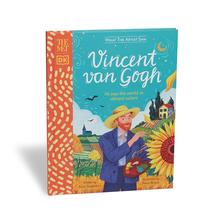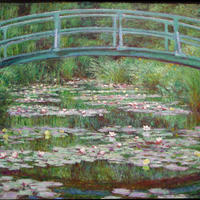More about Green Wheat Fields, Auvers
- All
- Info
- Shop

Contributor
Am I alone in wanting to swim through van Gogh's Green Wheat Fields?
Vincent van Gogh painted this pool of luscious green wheat fields after his voluntarily incarceration at the Saint Paul asylum in Saint-Remy. Hard to believe anyone would voluntarily enter an asylum, especially in the 19th century, but, alas, our poor Vincent was desperate.
Van Gogh eventually left the asylyum and travelled to Auvers-sur-Oise, where Green Wheat Fields was painted. This glorious landscape is one of many Vincent painted after his departure from Saint-Paul, which makes sense. It’s a complete contrast to life in the asylum; the tranquil fields and the spacious outdoors as opposed to small rooms and stone walls. There are no figures in this work, no human distractions, not even any birds - only the purity of nature painted in shades of blue and green.
Green Wheat Fields is one of the last paintings ever completed by Vincent, who shot himself weeks later in Auvers...in a wheat field. It would also be a wheat field Vincent would shoot himself in. There is no exact date to pinpoint when Vincent painted Green Wheat Fields, but we know it was completed in June-July of 1890. It may not be the very last work, but it was certainly painted in the last few weeks of his life.
Before donating this painting to the National Gallery of Art in Washington, D.C., Paul and Rachel Mellon hung the painting above the fireplace in their living room. It sat there, unframed, from 1955, when they first purchased the painting, to 2013 when, at 103 years of age, Rachel gifted the painting to the museum.
Over the years, Green Wheat Fields is said to have upheld its quality better than other works by van Gogh, due to its cool color pallette. The organic compounds that make up the pigments in red paint from that time break down easily when exposed to daylight. As such, many of van Gogh's other paintings, especially of flowers, have lost their original vibrancy.
Sources
- Boyle, Katherine, “National Gallery to display van Gogh’s ‘final grasp,’ not seen publicly since 1966,” The Washington Post, December 19, 2013. Accessed January 31, 2020. https://www.washingtonpost.com/entertainment/museums/national-gallery-t…
- Khasnis, Giridhar, “I Paint my Dream,” Deccan Herald, January 12, 2020. Accessed January 31, 2020. https://www.deccanherald.com/sunday-herald/sunday-herald-art-culture/th…
- Kopper, Philip, America’s National Gallery of Art. Princeton: Princeton University Press, 2016,
- Pickvance, Ronald, Van Gogh in Saint-Remy and Auvers. New York: Harry N. Abrams, INC., Publishers, 1986.
- Vogel, Carol, “Van Gogh’s ‘Green Wheat Fields, Auvers’ Goes to Washington,” The New York Times, December 19, 2013. Accessed January 31, 2020. https://www.nytimes.com/2013/12/20/arts/design/van-goghs-green-wheat-fi…
- Zongker, Brett, “Rare van Gogh painting finds new home at the National Gallery of Art,” CTV News, December 19, 2013. Accessed January 31, 2020. https://www.ctvnews.ca/entertainment/rare-van-gogh-painting-finds-new-h…















